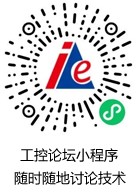White Paper about connectivity in building control 点击:870 | 回复:0
发表于:2002-03-18 14:44:00
楼主
White Paper about connectivity in building control
White Paper from Tridium Inc.
Building control systems can make environments more comfortable, safe and efficient by integrating systems such as heating, air conditioning, lighting, security and telecommunications into one centrally controlled, automated system. In order to do this effectively different systems need to be able to communicate and interact with each other.
The Promise
By integrating these control systems with intelligent software applications, buildings can become active structures that receive signals from diverse controlling and monitoring devices and then send those signals to the appropriate appliances and systems in the building. The result would be a building management system that allows administrators to do everything from setting lighting and air conditioning schedules to controlling energy usage via a standard web browser – or better yet does it for the user automatically.
The Issues
Two issues have held the industry back from achieving this promise. One is the prevalence of different communications protocols currently embedded in automation devices. The other is a lack of software. As we will see these issues are related.
Software in the automation industry has not advanced at the rate in which that in the mainstream computer industry has. It is far more expensive and is not as mature. These issues are compounded by the fact that the software currently in use was not developed on an architecture that allows seamless use of the Internet and browser technology.
The Background
Unlike the computer industry there has not been a foundation or framework for independent software developers to build on in the automation industry. All software applications, by necessity, come from the supplier of the automation hardware. By comparison, the PC architecture and Microsoft Windows operating system in the mainstream computer market created a universal framework. This allowed developers to build software with universal application across a wide range of products and markets. Think what it would be like if your word processing application only worked on Dell computers (or Compaq or HP). This was the case with office computer systems like those from Digital Equipment and Wang before the PC revolution. History has shown that this is not a supportable paradigm. The PC revolution erased proprietary solutions from the map. More importantly, it erased the proprietary segmentation from the computer industry. Software became a tool that could be used across different manufacturers’ computers. The result was an unimaginable explosion of software and computer technology and a revolution in the way that business uses technology.
Why Has Building Automation Been Different? So why has the building automation industry been immune to similar progress?
Protocols
First, the building automation industry is permeated with many different communication protocols. The major reason for this is related to growth of the building automation industry before the PC revolution. Available technology at the time required manufacturers to build highly proprietary solutions. There were no standard fieldbus network solutions or software object standards. In fact, the proprietary solutions manufacturers created used to be the competitive advantage of a company – they had created a solution where none existed.
Today the proprietary nature of these systems has become a ball and chain for everyone. Manufacturers spend the majority of R&D dollars building communications infrastructure over and over again for each new product line they develop while trying to maintain limited compatibility with their legacy systems. Consumers are forced to accept software with features and functionality that are severely outdated compared to the other applications they have on their desks.
The Economics Of Legacy Systems
Unlike the mainstream computer industry, where we update
热门招聘
相关主题
- FX2N通訊控制多台三菱變頻器
 [1522]
[1522] - 求助:电流环和4~20mA有什么区...
 [4278]
[4278] - 3964(R)协议参考
 [2613]
[2613] - PLC的LIN总线通讯解决方案
 [1979]
[1979] - P-NET系列讲座(八):第8层-信...
 [1824]
[1824] - 台达DVP-24ES PLC的RS485通讯...
 [1663]
[1663] - anybus-c PDP如何配置PROFIB...
 [1670]
[1670] - 485 接口输出信号如何测试发...
 [2475]
[2475] - DeviceNet 简介
 [2902]
[2902] - DEVICENET 现场总线 中文协议...
 [2171]
[2171]

官方公众号

智造工程师
-

 客服
客服

-

 小程序
小程序

-

 公众号
公众号

















 工控网智造工程师好文精选
工控网智造工程师好文精选
